Marcel is joined by serial entrepreneur and CEO at Alpha Inbound, Nigel Thomas. Among the topics tackled; improving your inbound strategy while addressing the realities of what it means to be at such a transformational stage of growth.
About Nigel Thomas
After leaving the corporate world aged 26, Nigel has spent the last four years building three marketing agencies – two of these agencies grew from nothing to 7-figure run rates within 12-month periods. Nigel’s also had the pleasure of consulting growth marketing strategies for 8-figure DTC brands and has run various sales teams – most notably building, recruiting, and training a 10-person inside sales team for the real estate market.
As the CEO of Alpha Inbound, Nigel’s now focused on building our reputation in the DTC landscape through business development, partnerships, and sales. His goal is to position the company as a top-tier growth marketing agency that works with the fastest-growing DTC brands.
In his spare time, Nigel loves watching sports – especially football (or “soccer”, depending on which side of the Atlantic you’re reading this). He believes he’s learned a lot from the mentality side/team spirit which he seeks to bring into the business world.
Points of Interest…
- How Nigel became CEO of Alpha Inbound 3:09
- Initial challenges to improving your inbound strategy 6:23
- Focusing on retention for improved inbound strategy 9:33
- Main pain point when scaling aggressively 12:38
- Measuring margins for improved inbound strategy 16:50
How Nigel became CEO of Alpha Inbound
As a performance marketing agency, Alpha Inbound focuses on major platforms – such as Meta, TikTok, Google, and high-performance UGC content. They also work with eight-figure Shopify brands to get them more customers, looking at brand awareness, and strategy.
In terms of Alpha Inbound’s origin story; Nigel is CEO, while Josh Graham is the founder. Nigel approached Josh about taking the business to the next level.
“Being completely frank, my idea was to come in, make some sales, get some commission, and go start my own thing… When I started working with Josh, we had to build out the case studies, a website, and a podcast. While we didn’t have to do that, it’s what I needed to do to really believe that we could deliver. “
With operations and finances on course, Josh and Nigel then set about recruiting a team, and subsequently started doing cold outbounds. Last year (2022) was their first full year in business since they rebranded Alpha Inbound, and they’ve managed to get to a seven-figure run rate.
“At the time of recording this month, we should be clearing $90K in revenue, and we’re looking to try and get to that $2 million mark by the end of this year. So, definitely some aggressive goals!”
For context; Alpha Inbound currently has a team of 10 people. As CEO, Nigel is largely on the business development side, still dabbles in operations, and liaises with some of their bigger clients (or partners). He’s also still heavily involved in recruitment and leadership, but focuses mostly on the more visionary aspects – looking to the future, planning accordingly, and ensuring the company is aligned to get where it needs to be.
Initial challenges to improving inbound strategy
Finding an effective outreach strategy and starting to convert a lot of clients, Nigel then needed to figure out how to best serve these clients – while the business scaled and without losing quality. With this in mind, I’m keen to hear about the next set of challenges he and the team had to overcome in order to grow at the speed that his new business strategy was enabling them to grow at.
“The biggest Achilles Heel is resourcing for agencies. It doesn’t really matter if you’re just getting started or if you’re a huge agency; I’ve spoken to agencies that do $200 million and they have the same problem. It’s resourcing.”
Digging into this, Josh pinpoints that the people who get those initial wins are usually the founders. While they’re really good at the delivery, they no longer have the bandwidth to be able to undertake the new business delivery you’re going to win from those initial case studies.
At this point, you’re at a crossroads. Nigel sees a lot of agencies compromise on quality at this juncture because it mostly boils down to money.
“They talk about ‘90% margins’ and all the rest of it. When I see that, I’m just thinking, ‘You’re either not doing the work or you’re outsourcing it somewhere very cheap, or you need to hire great talent and take the hit on the margins’. It obviously comes down to how much cash you’ve got.”
With recruitment being the next course of action for Nigel and Josh, they launched themselves into the hiring process. Perhaps prematurely.
“There’s a lot of cost opportunity of hiring the wrong person. I’ll be honest about it. And we had to have some challenging conversations. We had to let a lot of people go. I feel like now we’ve got some incredible people on board and we’ve managed, obviously, to gather some resources to hire people from top agencies. But then we had to go through a lot of hires to get there.”
As well as having the operational infrastructure in place, another key component for scaling at such a speed at Alpha Inbound was the creative side of proceedings. Undertaking creative at scale, for such big brands, can cost hundreds of thousands of dollars. The ad spend is wild and it’s one of the craziest operations to orchestrate. In fact, in Nigel’s experience, this is why even 9-figure brands require agencies because they don’t quite know how to orchestrate such an operation.
“Josh was seriously overloaded with work, he was dying on me, man. And I was just on back-to-back interviews all day until we found the people we needed. Thankfully, now we’ve got this incredible media buyer and he’s just amazing. He give us so much time back whilst also adding more to the process.”
Side note: our Agency Profit Toolkit is a one stop shop for you to be able to outline some of these crucial profitability numbers to a potential buyer. Spreadsheets, templates and training videos, you name it, it’s all in the toolkit. Grab yours free at the link below:
Focusing on retention for improved inbound strategy
With Nigel and Josh having tackled their initial resourcing issue by recruiting some stellar talent, what were some of the more challenging elements of ensuring the cash flow stayed healthy while bringing all those additional people into the business and getting the ramped up?
“I think a lot of agencies struggle with having proper financials, and this is obviously key. A good bookkeeper to keep you in check is a good hire to make early doors. You need to have that awareness of your finances, how much cash is in the bank. and having that as a target to get a certain amount of cash in the bank to retain.”
Focusing more on retention than just acquisition is also a huge thing to consider. So many agencies are great at sales because they’ve got that marketing and sales background, but they don’t know how to provide a great experience. You need to do all the little things so your clients stay with you. And it’s always easier to resell back to an existing client, retaining them for 12 months as opposed to dropping off every quarter.
“Providing a great experience all the way through, from the weekly calls that we have to just going above and beyond – they stay with us. They trust us, they know that we we’re the company that shows up in bad weather. So, when there’s an algorithm change on Facebook, they’re not just gonna go to the next cold email and go and sign up of that agency, which is the problem a lot of agencies seem to have.”
In order to focus on retention strategies and Alpha Inbound’s own lifetime value, Nigel and the team employed project management tools – such as Asana and MyCare Table – to build out their systems and processes.
Main pain point when scaling aggressively
Circling back to those “pretty aggressive growth goals” Nigel outlined earlier in our chat; he wants to double or triple over the next 12 months. Surely that’s not going to be plain sailing. What are some of the pain points he envisages occurring as Alpha Inbound transitions to that scale?
“The operations side of it will be massive, especially as we push more into content and reporting. Reporting’s a big one for us as we need to get a lot better at it – again, to provide a better experience to our clients, but also for what we do. Having the reporting for our team is massive – and the feedback loop between the media buyers and the content team – so they’re iterating the right content in real time. I mean, when you’re spending hundreds of thousands a month, speed kills.”
Other potential pressure points is keeping everyone aware of their own KPIs (***expanded on from 13:31 minutes***), keeping everyone in alignment in tandem, and bringing consistent transparency across the team. Once everyone in the team is aware of the finances then they can take ownership and accountability. This helps to everything to drive forwards towards a collective goal. And if you don’t get there, you’ll know pretty damn fast that a change in tack is required.
In terms of the KPIs that Nigel finds working well to get the team aligned, he’s been experimenting with a few different ones, such as payment models.
“We take an average ad spend across most of our clients… We have a smart target and a stretch target. So, if we hit the smart target, we give out a certain bonus, and then if we hit a stretch target, we also give out a better bonus.”
***Nigel digs into this further from 14:40, providing a good indicator of a value metric for your clients***
Measuring margins for improved inbound strategy
Thinking about margins, I would assume – based on the data collected by Nigel so far – that there is not a linear correlation between the amount of cost that Alpha Inbound incurs to serve a client and their ad spend. I’m sure that the amount of effort to manage a larger budget goes up, but it’s not linear in that the gap gets bigger (and bigger) the larger the ad budget goes. Is this the case?
So, I ask Nigel how margin measuring has been for him. More specifically, how did he land on that pricing model with a view to understanding that it was gonna give him the margins to scale the way that Alpha Inbound has?
“There’s a conversation in the e-commerce industry that often gets had, which is, do we price by ad spend, or do we price by performance? Obviously, the argument for the brand side is – ‘Put your money were your mouth is and only charge when you get the results’. But there’s two big problems with that. One is the fact that you don’t actually control that data.”
Indeed you don’t, that data usually belongs to platforms like Facebook and you’re making guesses based on it. Nigel, quite rightly, deems this largely irresponsible to have your whole team on a model which is effectively beyond your control. That said, what’s your other means of forecasting?
As Nigel puts it (***from 18:05 minutes***); if you have X amount of brands predictably coming into your pipeline, and you’re going to close X amount of deals within the next six months, you can then forecast when to recruit the right people at the right time. So, what happens if this isn’t an accurate prediction? Well, your team is going to get overloaded. Their bandwidth will be obliterated, and ultimately, you’re going to be left with a terrible experience.
Your client may perceive this as some kind of flaw, or weakness, but really it comes back to resourcing properly. Hiring the right people to get the best result for that same client brings a better experience for everyone involved.
“You should hire leaders who are gonna be really proactive. I can tell you now, we’ve hired cheap and we’ve hired expensive and expensive wins every time. Again, you have to be smart with cash but I’d rather be sitting at a 15, 20% margin for a year or so. Then edge up to maybe 30%, instead of being at 80, 90% and not really having that cost opportunity of hiring someone incredible.”
What does this “incredible person” look like? Well, along with being proactive, they focus on the client experience, which should result in said client telling ten other brands how brilliant you are – or complaining about you to their industry.
Word of mouth is still one of the most important channels out there.
Key takeaway…
What Nigel has been describing is important as it illustrates the difference between unique economics as it relates to a service offering, a client-to-project, and your financials. There will always be a Delta in between those things. In many ways, this Delta should be somewhat intentional (***I do a deep dive on this from 20:19 minutes, do join me***).
Nigel also has this additional nugget of positive insight to leave you with.
“For agency owners that are getting started, one thing to get excited about is the environment we’re in now. We’re going into a recession, and that means obviously a lot of tech startups and more bloated agencies have laid off a lot of people. So there’s some real incredible talent out there right now.”
Every cloud!
See more from Nigel…
- Nigel’s LinkedIn linkedin.com/in/nigelthomas-ai/
- alphainbound.com
- Alpha Inbound LinkedIn linkedin.com/company/alphainbound/
- Ecom Alphas Podcast
Did you learn anything new from this episode? Let us know in the comments below! We have helpful blogs designed to bolster your agency profitability, such as How To Calculate Your Billable Employee Cost-Per-Hour.
Our next installment of #APP, on May 31st, will see Marcel talk with Ashley Carroll for our 114th edition. Our previous blog – Episode 113 with Dean Soto – can be viewed here…
Avid #APP Listener?!
We would be eternally grateful if you could leave us a review…
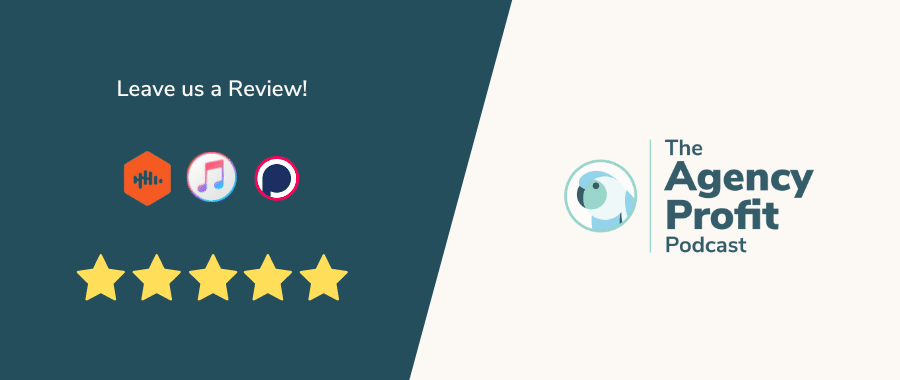
Agency Profitability Tool Kit
If you’re looking for more resources to help you improve your agency’s profitability, check out the Agency Profitability Tool Kit. It’s full of templates and checklists used when consulting clients. This helps them improve profitability by over 100% in under 60 days.
Fill out the form below for your copy!

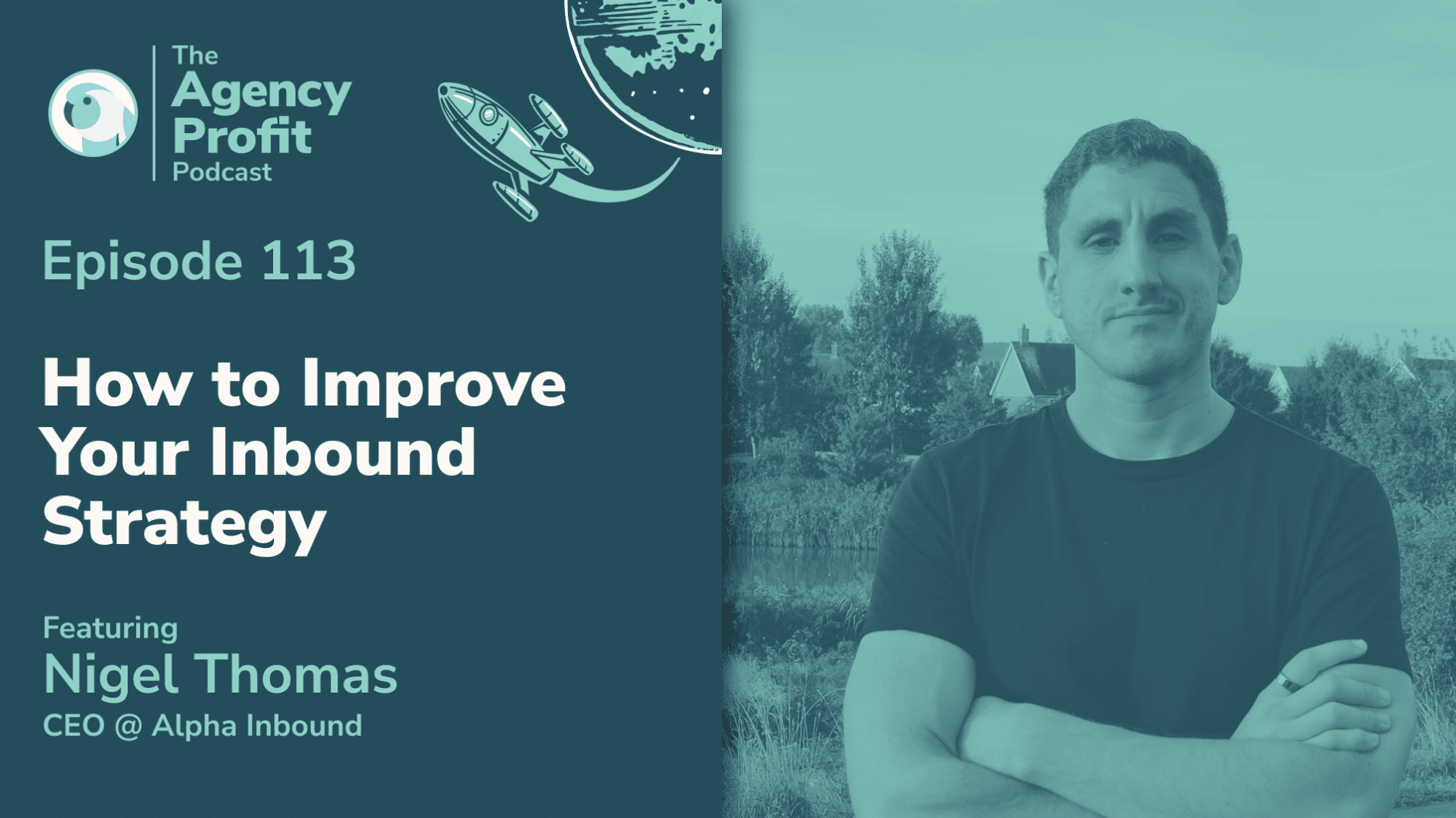
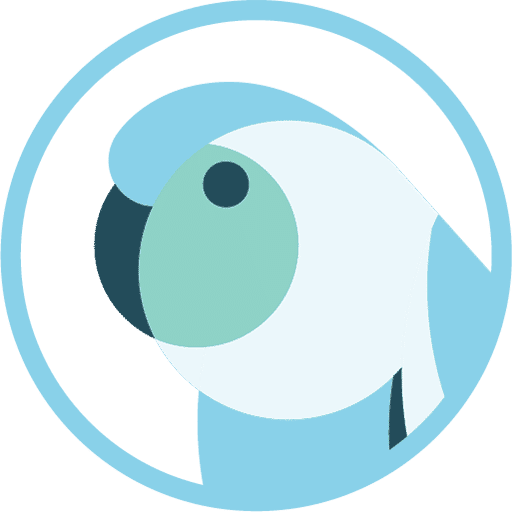

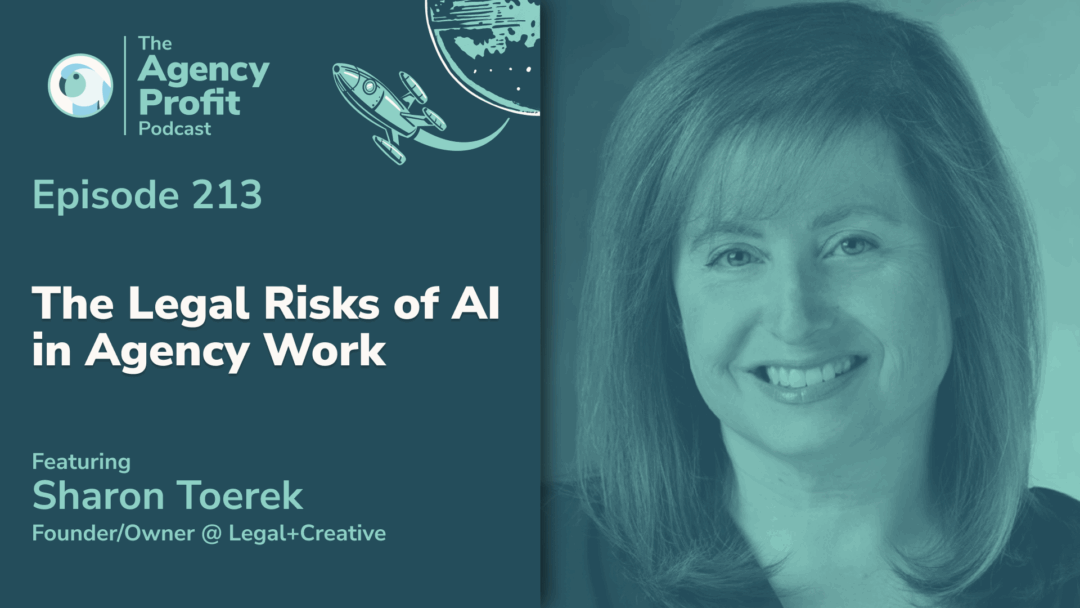
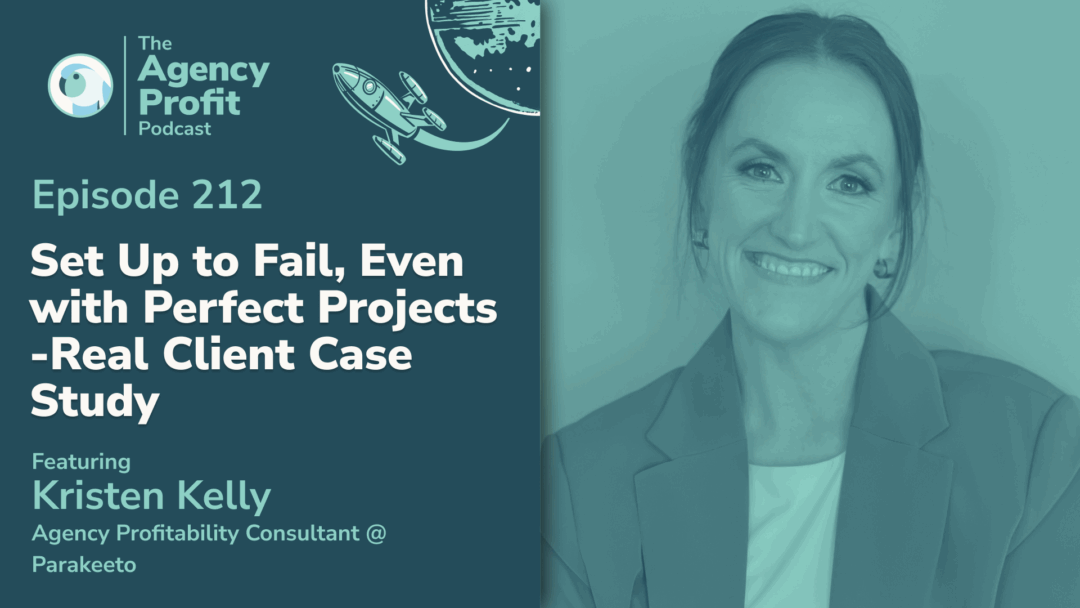
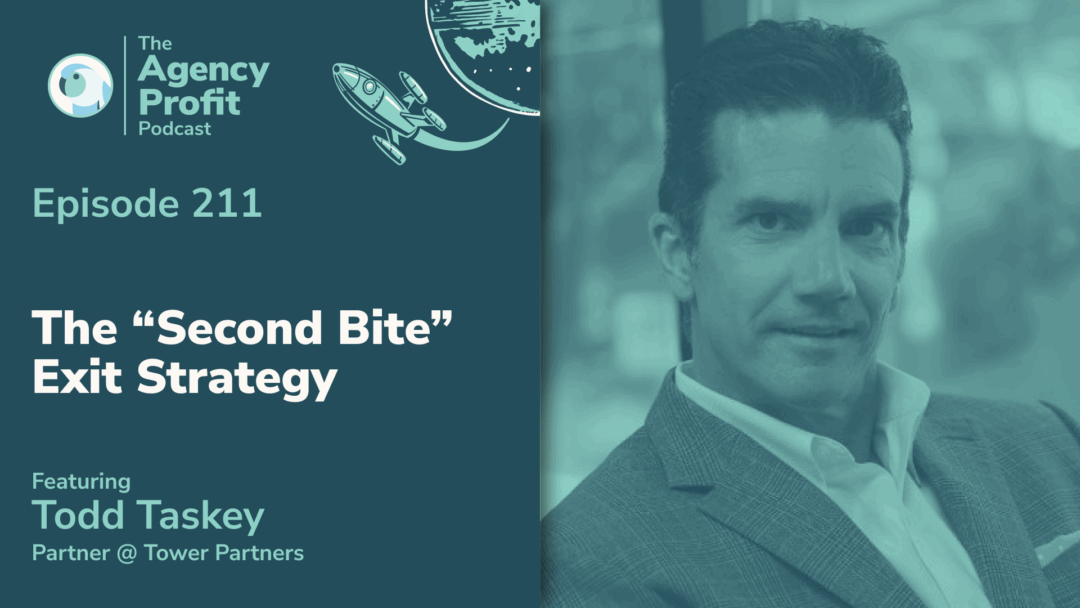

0 Comments